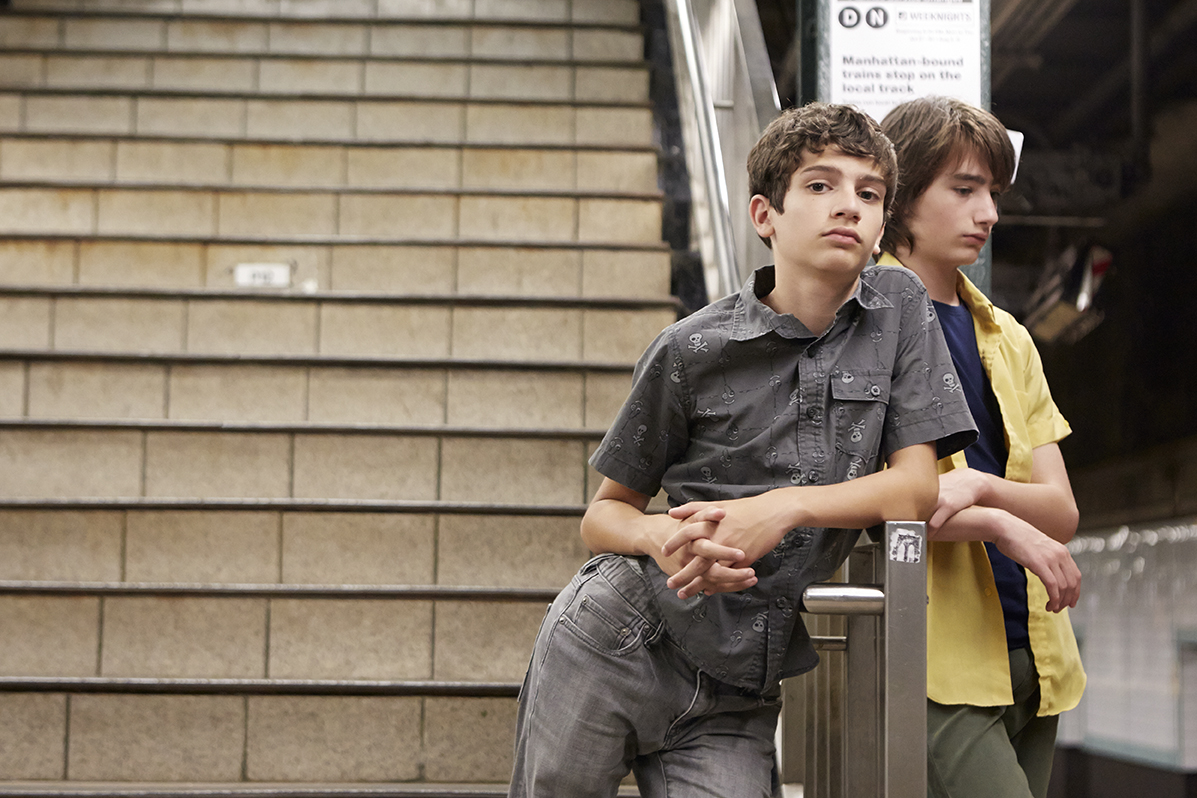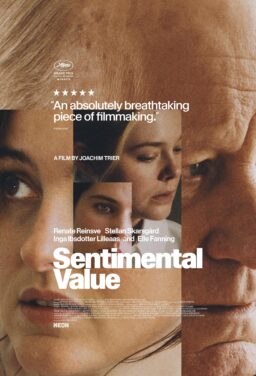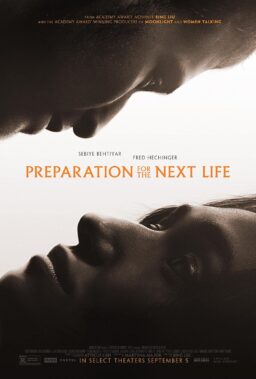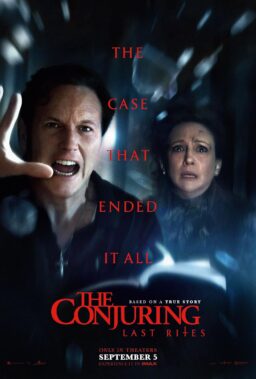There are certain cultural and class divisions that would’ve normally prevented Tony (Michael Barbieri) and Jake (Theo Taplitz) from becoming close friends. But since they are 13, any societally imposed barriers fail to rupture their bond. When their parents enter a heated dispute over property, the boys begin a “silence strike” with the hope that it will force the adults to become more empathetic with one another. In a “Parent Trap”-esque Disney drama populated with smart kids and clueless grown-ups, this all would’ve led to a happy ending. Yet this is “Little Men,” the latest delicately nuanced drama from Ira Sachs, director of 2014’s equally wonderful “Love is Strange.” There are no easy solutions here, and yet the film’s lack of conventional closure turns out to be so much more satisfying than any deus ex machina.
After attending a screening of “Little Men” at the Chicago Critics Film Festival this past May, Sachs spoke with RogerEbert.com about crafting naturalism, the cinematic qualities of youth and the recent controversy regarding transgender students’ choice of bathrooms.
I was struck by how “Little Men” is, in many ways, a continuation of themes you began to explore in “Love is Strange.” Both films contain sequences of young people moving effortlessly through their environment, either on bikes or skateboards.
Well, childhood is very cinematic. There’s a reason why there are a lot of beautiful movies about kids. They move through the world in a different way than the adults do, and I think in this film, there’s a real contrast between the scenes of adult life and the scenes of childhood. That’s the tension of the film, those two worlds coming into conflict. I wanted to make a film that would be exciting for young audiences. They would see it and get that thrill that movies can provide. It’s a different sort of thrill than the ones you get from films about superheroes. This movie will hopefully make young people discover how their own lives can be kind of magical.
A key to your film’s magic is the score by Dickon Hinchliffe, which accentuates the theme of lives in mid-bloom.
Dickon and I had worked together on two previous films, “Forty Shades of Blue” and “Married Life.” When I sent him this script, he had an immediate emotional response to it. As the father of three kids himself, he understood the film very deeply, and he knew what kind of score we might want. What really works about the score is it’s both very childlike and also very sophisticated. He managed to bring both of those elements into a score that I think is extremely beautiful. I was trying to use all the tools of cinema without being dishonest to the story itself.
Was there a particular friendship that you drew from for inspiration?
Yes, in fact, I saw my best friend from elementary school last night at the [Chicago Critics Film Festival] screening of “Little Men.” My friend Greg and I were closest friends from probably second grade to seventh grade, and then he moved away. He was one of two black kids in my school, which was in a very white community. There is a way in which, as children, you’re able to cross racial and class lines that sadly is often not the case as an adult. I was also involved in the Memphis Children’s Theatre, which was very similar to the theatre scenes in the movie. That community was the most diverse that I had ever been in, and I’ve never seen it replicated. With “Little Men,” I wanted to show why those barriers are so difficult to cross.
Was the name Tony a reference to “West Side Story”?
Oh yeah, and also a reference to Tony Manero [from “Saturday Night Fever”]. The film is set in the same neighborhood, Bay Ridge, and ends at the same bridge—the Verrazano-Narrows Bridge—that is in “Saturday Night Fever.” That film was an inspiration, as was “West Side Story.” In a way, this is a Romeo and Juliet story without the romantic or sexual element.
I like how the film isn’t about the kids’ bond being tested, so much as their bond with their parents.
My co-writer, Mauricio [Zacharias], and I got the idea from Ozu’s films “I Was Born, But…” (1932) and “Good Morning” (1959), which are both fantastic. “I Was Born, But…” is a masterpiece. These films were about kids that go on strike, and it was a good idea for a plot. In a way, that was the starting point for the film, and then we brought in a lot of personal and somewhat autobiographical elements. Mauricio’s family was in a conflict over a storefront in Rio, and they were trying to evict the tenant. It was the opposite of life imitating art, in that life gave us stories to tell. My husband is from Ecuador. He moved to New York when he was ten with his single mother, and they lived in Williamsburg. He was a painter, and he went to the [Fiorello H. LaGuardia High School of Music & Art and Performing Arts]. Those are a few of the elements from real life that came into the story.

What led to the inclusion of Tony’s Lee Strasberg class?
Mauricio Bustamante, the actor who plays the acting coach, actually teaches at that school, and he is Michael Barbieri’s teacher, so they had a great familiarity with each other while doing that scene. Michael just got into LaGuardia and he is also presently in South Africa shooting “The Dark Tower” with Matthew McConaughey and Idris Elba. It’ll be interesting to see what will become of those boys.
The moment where Michael and Mauricio lobby the same lines back and forth is very compelling.
I wanted to show that these boys are good at what they want to do in their lives. Michael’s a really good actor, and so I wanted to put him in a situation where you could see that come to life. I also like to play with the boundaries between documentary and fiction in my films. I would say that my films are 90% scripted, but there is a crucial ten percent of them that is more observed. You feel like you’re really there, and you know that what you’re observing is really happening. I think that resonates throughout the other 90% because it gives the whole film a kind of naturalistic texture.
Jake’s father (Greg Kinnear) tells his son that it’s good to rely on your natural abilities, rather than risk practicing too much. His philosophy is the inverse of “Whiplash,” and it reflects your approach to working with young actors.
I would actually say all actors. I don’t rehearse. I’ve talked to each actor individually about the script and we go through it, but we never see the lines come alive until production. So in a way, they have to rely on what comes naturally to them. They have to work instinctually as performers, and that also applies to my approach to directing. It’s important to trust yourself and to not try to control too much. I used to put a sign on my wall in my office that reminded me to make an “imperfect film.” There’s something about imperfection that brings beauty to your work. I often think about two quotes from Jean Renoir. One is, “When you’re making a film, keep the windows open and let the world in.” That also means, “Relax. When you’re shooting, be there.” And the other is from “Rules of the Game”: “Everyone has their reasons.”
That quote could easily be the tagline for this film, which considers each of the characters’ perspectives and motivations.
That was also dramaturgically strategic in the sense that we wanted to not give anyone too many of the right cards, so that your empathy would shift throughout the movie. The characters’ struggle is the struggle of the middle class. It’s not about the clash between the aristocracy and the poor. It’s about two families who are trying to find something in between, and are both just trying to hold on.
Like “Love is Strange,” this film also focuses on the idea of home and displacement. It’s about what a particular place can mean to your identity and what happens when you’re stripped of that.
When you say “home,” the word is very resonant to me. It’s the theme of all my films—the struggle to be comfortable in your own body and in your own space, and I think drama is founded when those things get uncomfortable.
Young people seem to be more enlightened these days. You mentioned in past interviews that you were open to talking to Michael and Theo about their characters’ sexuality, even though it’s subtextual in the film.
My first film was called “The Delta,” which was about a gay teenage boy who was very uncomfortable with himself. That was made in the ’90s. I don’t know what the future for these kids is as characters or as people, but I hope it’s not as difficult. I feel that it might not be, and as a parent, it’s something that I want for my own kids.
When transgender students want to use bathrooms consistent with their gender identity, it’s often the parents—rather than the kids—who have objections to this right.
It’s a terrible, ridiculous, absurd and violent kind of reaction, but it’s also the nature of civil rights. We have to go through these moments of conflict in order for there to be progress. A month ago, before North Carolina’s [HB2 law was passed], this wasn’t even on anyone’s mind as an issue. People didn’t have any understanding of where this conflict might exist, and now a lot of people do. Look at what happened to Russia, where a wall suddenly went down, and things went criminally backwards. Then you start thinking about Trump and you get really frightened, because things in America could really go in the direction of Germany. There’s a really good piece by Adam Gopnik in The New Yorker where he’s calling for us to pay attention. Very quickly, people went from trying to change Trump to Trump trying to change them. All these people in the Republican Party who were against him are now endorsing him.
You are so gifted at portraying moments of private pain. When Greg Kinnear sobs quietly in the middle of the night, I was reminded of the scene in “Love is Strange” where Charlie Tahan cries in the stairwell.
It’s something that cinema can really do. It can observe people when they are alone. You’re both alone and in the company of the audience, so it’s a privileged position that the camera can have. I also am very interested in how people present themselves in different ways. They are different in groups and in relationships and also by themselves. That scene was a very personal one for me. I lost a dear friend to breast cancer two years ago, and I think the anguish of loss is something that resonates in the film. The film is about the hole that opens up when a generation passes, and how we go about filling that space—and in Greg Kinnear’s case, how he must become a man.
I also found Theo’s emotional outburst late in the film heartbreakingly honest in its sincerity.
I call it the “Fallen Idol” scene. That film ends with the boy trying to fix everything—frantically and inappropriately and naively. There’s something so wrenching about that discrepancy between what he believes he can do, and what has already taken place in the adult world. That’s the scene that we worked most consciously on as actor and director, in getting him to the place where that scene would come alive in a very natural way.
What have been the most surprising reactions of young audiences to the film?
I think joy, because for them, the film is fun. There’s a lot of identification with being voyeurs to adult life. When I was shooting the scene at the dance club, I kept thinking of “Bugsy Malone.” As I was watching it, I thought, ‘It seems like these characters are 30, but they’re actually 13.’ What’s nice in this film is the boys are allowed to go back and be kids again together. They try to go forward and then they have each other to fall back to.
There’s a wonderful shot of the two of them waiting on the subway platform. Was it a challenge to shoot on the MTA?
The footage was all stolen, meaning we just went on a train for a couple of hours with the kids, and they knew where they were in the story. It wasn’t as difficult as I would’ve thought, given the fact that there wasn’t any real dialogue that we needed to shoot, which would’ve been almost impossible. We were able to be more observational and unobtrusive. An important textural element to the film is that the audience is not only watching Jake and Tony, but they’re also watching Theo and Michael. There are moments where the actors lost consciousness of the camera and they just became two boys talking. They were friends in real life, and you can see that in the film. We can recognize that ease that we’ve had with our own friends. Again, in ten percent or less of the film, I’m just trying to document what’s happening in front of the camera. For the rest of the film, I’ve constructed everything through the script and through the shots, and then that ten percent resonates through the other 90%.












